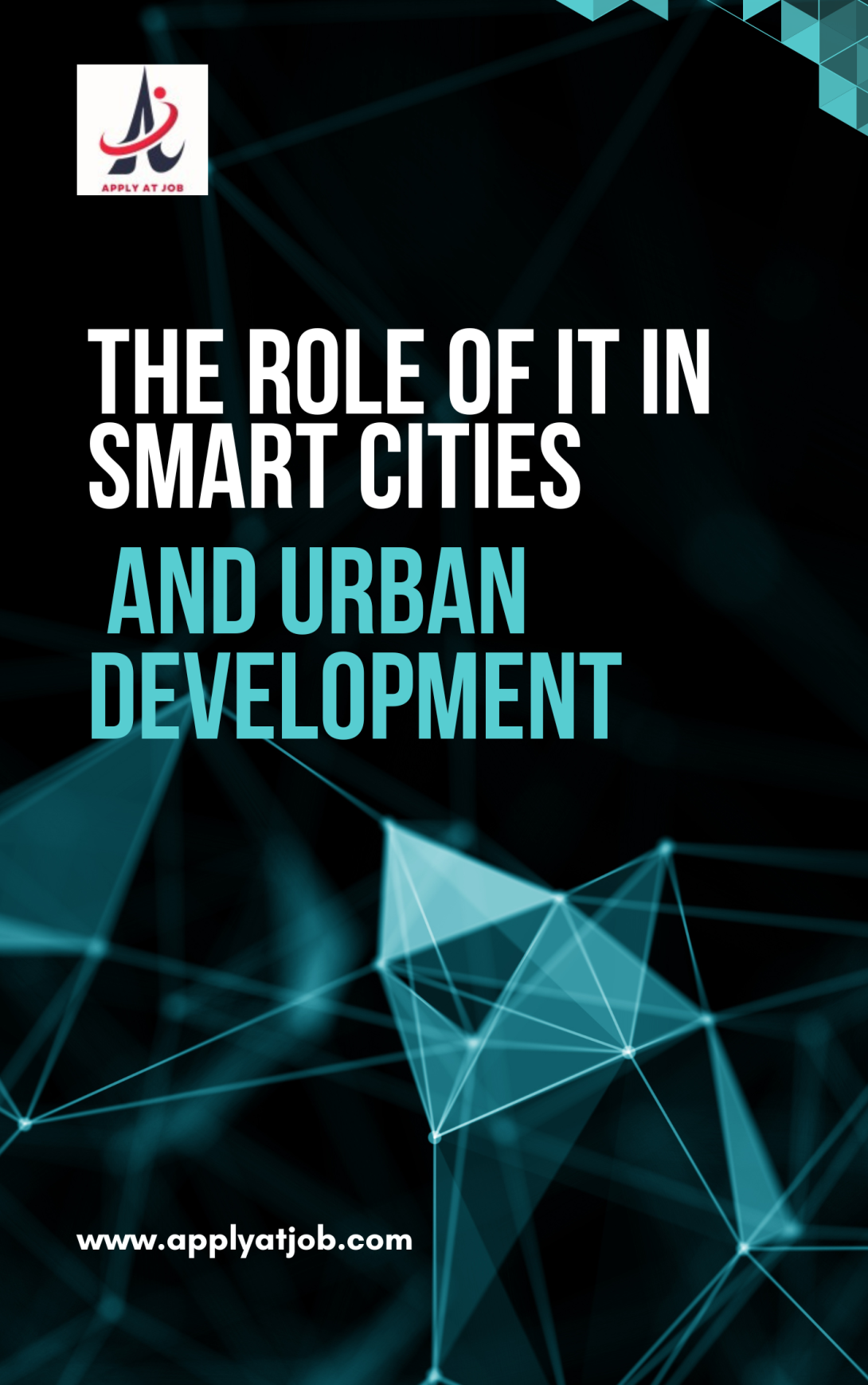
The Function of Technology in Urban Development and Smart Cities:
Introduction:
The idea of "smart cities" has gained popularity recently as cities aim to improve their livability, sustainability, and efficiency. The swift progress in Information Technology (IT) is pivotal in converting conventional cities into intelligent, networked settings. This blog examines how IT is transforming urban development, strengthening local government, and raising citizen standards of living.
Important IT Elements in Smart Cities:
1.Internet of Things and Sensors:
The core of the infrastructure of smart cities is made up of sensors and IoT devices. They gather data in real time from several sources, such as energy meters, environmental sensors, and traffic lights. Urban systems are successfully monitored and managed with the use of this data. To ease congestion, smart traffic management systems, for instance, assess traffic flow using sensors and modify lights accordingly.
2.Information Analysis:
Through the analysis of enormous volumes of data gathered from IoT devices, data analytics plays a crucial role in smart cities. Based on trends and patterns, advanced analytics technologies assist municipal planners and administrators in making well-informed judgments. Predictive analytics, for example, may be used to estimate traffic patterns and assist in the construction of more effective transportation networks.
3.Cloud-Based Software:
The infrastructure required to store and handle the massive amounts of data produced by smart city technology is provided by cloud computing. It makes scalable, adaptable, and reasonably priced data management systems possible. The seamless integration of diverse IT systems and applications throughout the city is made possible by cloud-based platforms.
4.Networks of Communication:
For smart city technologies to function properly, dependable and fast communication networks are necessary. 5G and other related technologies provide increased bandwidth and connection, enabling real-time data transfer and device-to-device communication. For applications like remote monitoring and driverless cars, this is essential.
5.Online safety:
Cybersecurity becomes a major worry as smart cities grow increasingly networked. Preventing cyberattacks and data breaches requires safeguarding sensitive data and maintaining the integrity of IT systems. Encryption and multi-factor authentication are two of the strong security measures that must be put in place to protect smart city infrastructure.
IT Uses in Smart Cities:
1.Intelligent Transportation:
Urban transportation networks are changing as a result of IT technologies. Real-time data is used by intelligent traffic management systems to optimize traffic flow and lessen congestion. GPS tracking and smartphone apps that give real-time schedule updates for buses and trains can improve public transit. Smart parking options and driverless cars are also transforming urban mobility.
2.Energy Administration:
IT is used by smart grids and energy management systems to track and regulate energy use. IoT sensors monitor building energy use, facilitating more effective energy management. Real-time input from smart meters encourages energy saving and lowers power bills for users.
3.Public Protection:
IT is essential to improving public safety. When paired with cutting-edge analytics, surveillance cameras may aid in both emergency response and criminal prevention. In public areas, smart lighting solutions may increase visibility while lowering crime rates. IT may also be used by emergency services to better manage resources and coordinate responses.
4.Medical Care:
By incorporating IT solutions into healthcare systems, smart city technologies enhance the delivery of healthcare. Electronic health records (EHRs) simplify the maintenance of patient information, while telemedicine platforms for remote consultations and monitoring. IoT devices can monitor and control chronic illnesses, improving resident care.
5.Environmental Observation:
Cities can monitor and control environmental concerns including noise pollution, water quality, and air quality with the use of IT technologies.
Obstacles and Things to Think About:
Even while IT has many advantages in smart cities, there are certain drawbacks to take into account:
1.Privacy Issues:
Privacy is a worry when large volumes of data are collected and analyzed. Upholding responsible data collection, storage, and usage is essential to preserving public confidence.
2.Coordination and Communication:
It might be difficult to integrate diverse IT systems and make sure that different technologies work together. Creating standardized frameworks and standards can aid in resolving these issues.
3.Expense and Resources:
Putting smart city technology into practice costs a lot of money. For municipal planners and managers, one of the biggest challenges is obtaining financing and controlling expenses while producing noticeable results.
Conclusion:
Urban development is undergoing a fundamental transformation because to information technology, which is making cities smarter, more efficient, and more sustainable. Smart cities are enhancing public safety, energy management, transportation, healthcare, and environmental monitoring by utilizing IoT, data analytics, cloud computing, and other IT technologies. Even if there are still obstacles to overcome, the potential advantages of IT-driven smart cities present a positive outlook for urban living in the future.
Urge to Take Action:
Anyone working in urban development, planning, or governance must keep up with the latest developments in IT trends and technology as cities continue to change. Building more intelligent and interconnected societies will depend on embracing these advancements and resolving related issues.




